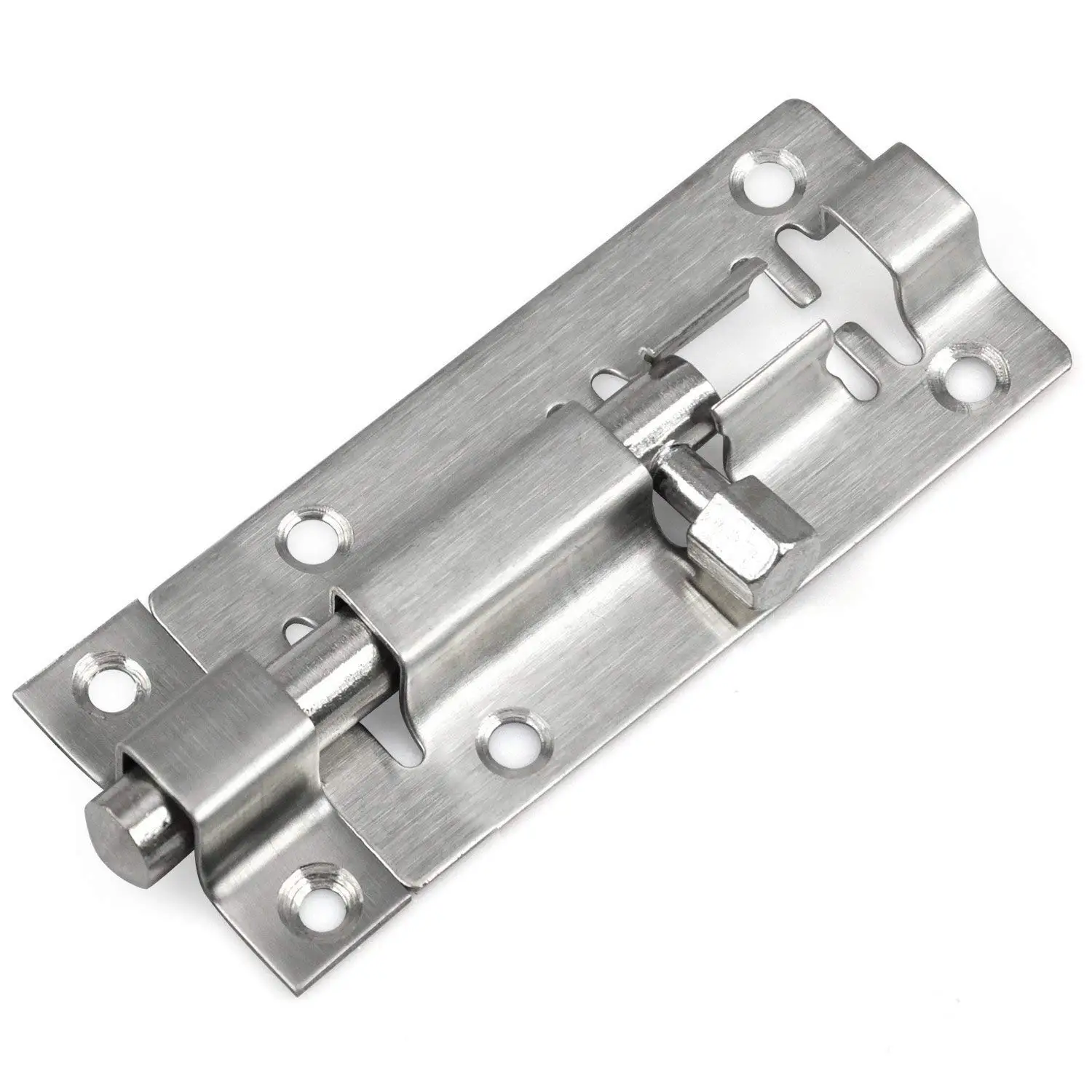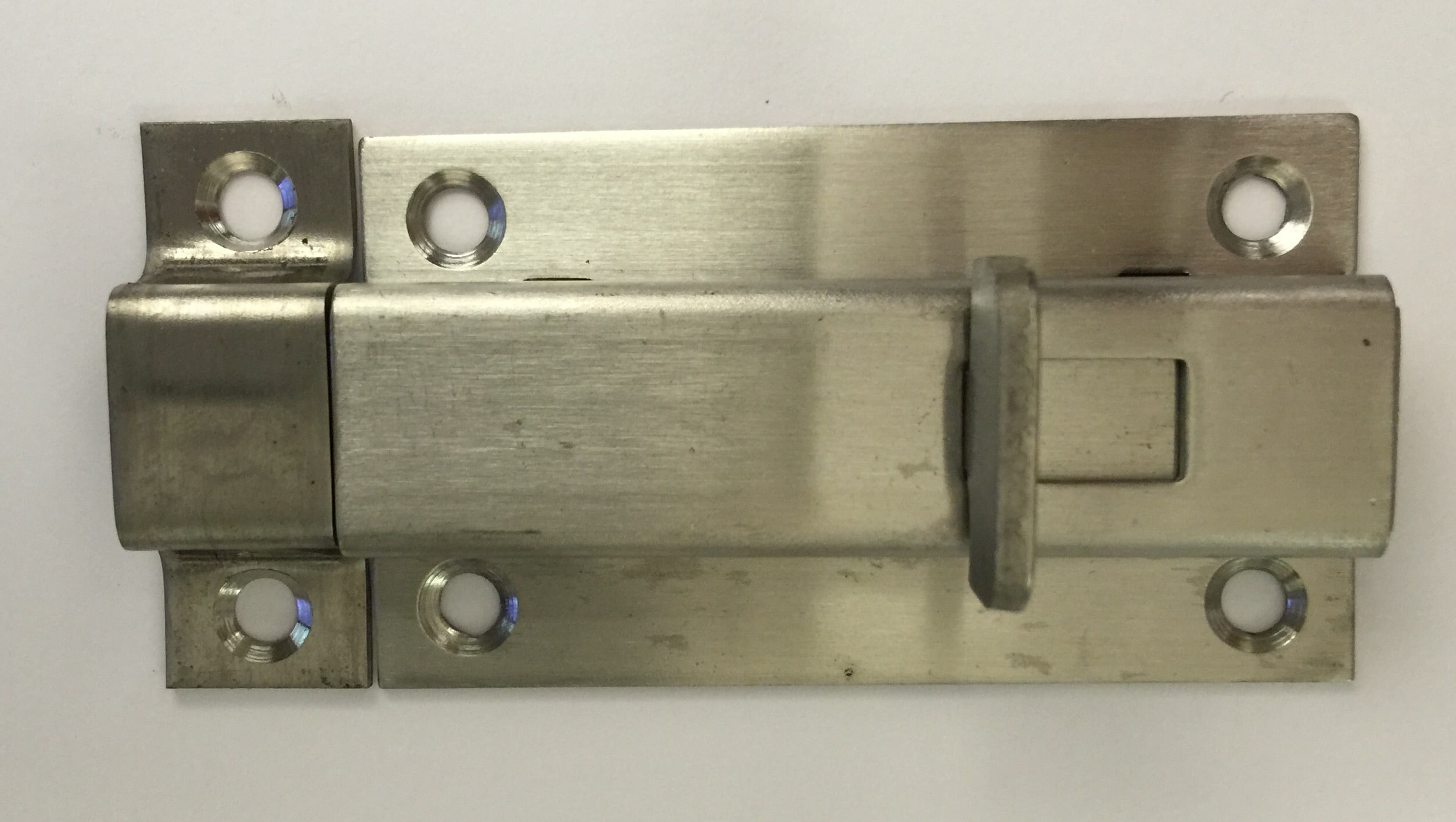Types of Slide Locks for Bedroom Doors: Slide Lock For Bedroom Door

Slide locks are a popular choice for bedroom doors, offering a balance of security and ease of use. These locks are typically installed on the inside of the door and operate by sliding a latch into a strike plate on the door frame.
Types of Slide Locks
Slide locks for bedroom doors come in various types, each with its unique features and benefits. Here are some of the most common types:
- Standard Slide Lock: This is the most basic type of slide lock. It consists of a simple latch that slides into a strike plate. It’s easy to install and use, making it a popular choice for basic security.
- Privacy Slide Lock: This type of slide lock features a privacy button or lever that prevents the door from being opened from the outside. This is a good option for bedrooms where you want to ensure privacy.
- Deadbolt Slide Lock: This slide lock incorporates a deadbolt that extends into the strike plate when engaged. This provides an extra layer of security as it is more difficult to force open than a standard slide lock.
- Keyed Slide Lock: This type of slide lock is similar to a deadbolt slide lock but also features a keyhole for external access. This allows you to lock the door from the outside if needed.
- Push-Button Slide Lock: This type of slide lock is activated by pressing a button. It’s easy to use and can be operated with one hand.
- Thumb Turn Slide Lock: This type of slide lock is operated by turning a thumb turn. It’s typically used for doors that are opened by sliding, such as patio doors.
Features and Functionalities, Slide lock for bedroom door
Each type of slide lock offers unique features and functionalities that cater to specific needs:
- Standard Slide Lock: Offers basic security and ease of use.
- Privacy Slide Lock: Provides privacy by preventing the door from being opened from the outside.
- Deadbolt Slide Lock: Provides extra security with a deadbolt that extends into the strike plate.
- Keyed Slide Lock: Allows for locking the door from the outside with a key.
- Push-Button Slide Lock: Offers convenience with a push-button activation mechanism.
- Thumb Turn Slide Lock: Ideal for sliding doors, operated by turning a thumb turn.
Comparison of Pros and Cons
The choice of slide lock type depends on individual needs and preferences. Here’s a table comparing the pros and cons of each type:
| Type | Features | Advantages | Disadvantages |
|---|---|---|---|
| Standard Slide Lock | Simple latch | Easy to install and use, affordable | Offers basic security, susceptible to forced entry |
| Privacy Slide Lock | Privacy button/lever | Provides privacy, easy to use | Offers basic security, can be easily bypassed with a tool |
| Deadbolt Slide Lock | Deadbolt that extends into strike plate | Enhanced security, more difficult to force open | More complex installation, slightly more expensive |
| Keyed Slide Lock | Deadbolt and keyhole | Enhanced security, allows for locking from outside | More complex installation, slightly more expensive |
| Push-Button Slide Lock | Push-button activation | Easy to use, can be operated with one hand | May be less secure than other types |
| Thumb Turn Slide Lock | Thumb turn activation | Ideal for sliding doors, easy to use | Not suitable for all doors, may not offer sufficient security |
Installation and Maintenance of Slide Locks

Installing a slide lock on a bedroom door is a relatively simple task that can enhance the security of your home. The process involves attaching the lock mechanism to the door and the strike plate to the door frame. This guide will provide you with detailed steps on how to install different types of slide locks and offer tips for proper alignment and functionality. Additionally, it will discuss common maintenance practices to ensure your slide lock remains in optimal working condition.
Installing Different Types of Slide Locks
The installation process for slide locks can vary slightly depending on the type of lock. Here’s a breakdown of the steps involved for common slide lock types:
Installing a Basic Slide Lock
- Step 1: Choose the location for the lock. Determine the desired height and position of the lock on the door. It’s recommended to place the lock at a height that is comfortable to reach and operate.
- Step 2: Mark the location for the lock and strike plate. Use a pencil to mark the position of the lock on the door and the strike plate on the door frame. Ensure that the marks are level and aligned.
- Step 3: Drill pilot holes for the screws. Use a drill bit that is slightly smaller than the diameter of the screws provided with the lock. Drill pilot holes at the marked locations on the door and door frame.
- Step 4: Attach the lock to the door. Align the lock with the marked location and secure it to the door using the provided screws.
- Step 5: Attach the strike plate to the door frame. Align the strike plate with the marked location on the door frame and secure it using the provided screws.
- Step 6: Test the lock. Once the lock is installed, test its functionality by sliding the latch bolt and ensuring it engages with the strike plate smoothly.
Installing a Slide Lock with a Deadbolt
- Step 1: Choose the location for the lock. Determine the desired height and position of the lock on the door. It’s recommended to place the lock at a height that is comfortable to reach and operate.
- Step 2: Mark the location for the lock and strike plate. Use a pencil to mark the position of the lock on the door and the strike plate on the door frame. Ensure that the marks are level and aligned.
- Step 3: Drill pilot holes for the screws. Use a drill bit that is slightly smaller than the diameter of the screws provided with the lock. Drill pilot holes at the marked locations on the door and door frame.
- Step 4: Attach the lock to the door. Align the lock with the marked location and secure it to the door using the provided screws.
- Step 5: Attach the strike plate to the door frame. Align the strike plate with the marked location on the door frame and secure it using the provided screws.
- Step 6: Install the deadbolt. Align the deadbolt with the hole in the lock mechanism and secure it using the provided screws.
- Step 7: Test the lock. Once the lock is installed, test its functionality by sliding the latch bolt and ensuring it engages with the strike plate smoothly. Also, test the deadbolt by turning it to ensure it locks and unlocks properly.
Tools and Materials Required for Installation
- Slide lock: Choose a slide lock that meets your security needs and complements your door style.
- Screwdriver: A Phillips head screwdriver is typically required for most slide lock installations.
- Drill: A cordless drill with a suitable drill bit size is essential for drilling pilot holes.
- Pencil: Use a pencil to mark the location for the lock and strike plate.
- Level: A level is crucial for ensuring that the lock and strike plate are installed horizontally.
- Measuring tape: A measuring tape is necessary to determine the desired height and position of the lock.
Ensuring Proper Alignment and Functionality
Proper alignment and functionality are crucial for the effectiveness of a slide lock. Here are some tips to ensure that your slide lock is installed correctly:
- Level the lock and strike plate: Use a level to ensure that the lock and strike plate are installed horizontally. This will prevent the latch bolt from binding or jamming.
- Check the alignment of the latch bolt: Make sure that the latch bolt is aligned with the strike plate opening. If it’s not aligned, you may need to adjust the position of the lock or strike plate.
- Test the lock: After installation, test the lock thoroughly to ensure that it slides smoothly and engages with the strike plate properly.
Common Maintenance Practices for Slide Locks
Regular maintenance is essential for keeping your slide lock in optimal working condition. Here are some common practices:
- Lubricate the lock: Periodically apply a light lubricant, such as graphite powder or silicone spray, to the latch bolt and lock mechanism. This will help prevent friction and ensure smooth operation.
- Clean the lock: Regularly clean the lock with a damp cloth to remove dust and debris. Avoid using harsh chemicals or abrasive cleaners, as these can damage the lock’s finish.
- Inspect the lock for wear and tear: Regularly inspect the lock for signs of wear and tear, such as loose screws, damaged parts, or rust. If you notice any issues, address them promptly to prevent further damage.
Safety and Security Considerations

Slide locks are a valuable addition to your home security system, providing an extra layer of protection for your belongings and loved ones. They are particularly useful for bedrooms, offering a sense of privacy and security.
Slide Lock Features and Security Benefits
Slide locks offer several key safety features and security benefits:
* Increased Security: Slide locks provide an extra barrier against unauthorized entry, making it more difficult for intruders to gain access to your bedroom.
* Privacy: They offer a sense of privacy, ensuring that only authorized individuals can enter the room.
* Ease of Use: Slide locks are generally easy to operate, even for children and elderly individuals.
* Versatility: They can be installed on a variety of doors, including sliding doors, French doors, and traditional doors.
* Durability: Many slide locks are made from high-quality materials, ensuring they can withstand repeated use and potential tampering.
Slide Locks and Home Security
Slide locks play a crucial role in enhancing overall home security by:
* Deterring Intruders: The presence of slide locks on bedroom doors can deter potential intruders, as they create an additional obstacle that may discourage them from attempting to enter.
* Providing an Early Warning System: If an intruder attempts to force entry, the slide lock can create noise, alerting you or your neighbors to the potential threat.
* Securing Valuables: By securing your bedroom door with a slide lock, you can safeguard valuable items stored in the room.
Effectiveness of Slide Locks in Deterring Intruders
While no security measure is foolproof, slide locks can significantly deter intruders. Studies have shown that homes with multiple security measures, including slide locks, are less likely to be targeted by burglars. The presence of a slide lock, even if it is not the most sophisticated lock, can deter intruders who are looking for easy targets.
Safety Tips and Precautions
Here are some safety tips and precautions to keep in mind when using slide locks for bedroom doors:
* Regular Maintenance: Regularly inspect your slide lock for any signs of wear or damage, and lubricate the mechanism to ensure smooth operation.
* Key Management: Keep your slide lock keys in a safe and secure location, and avoid giving copies to unauthorized individuals.
* Backup Security: Consider using a secondary security measure, such as a deadbolt or chain lock, in addition to your slide lock for maximum security.
* Awareness: Be aware of your surroundings and report any suspicious activity to the authorities.
* Proper Installation: Ensure your slide lock is properly installed by a qualified professional to maximize its effectiveness.
